Samsung Galaxy S25 Ultra review

Sometime early last week, when I hadn’t fully explored the Galaxy S25 Ultra, I remembered a conversation with a friend who works for a tech company. He once told me that the next big innovation in smartphones might come in software rather than hardware. I didn’t pay much attention to it back then, but now every word he said seems true. I can sense it, and so can you.
The Galaxy S25 Ultra (first look), Samsung’s top-end smartphone of 2025, is more or less designed to showcase software prowess, with artificial intelligence at the center of the experience. It’s a template that may define the tech landscape this year, with every smartphone company following the playbook in the months to come. However, the bold gambit on AI and software also raises the question: what more innovation is left to make smartphones that already seem mature and polished to an extent?
I’ve spent a few days with the Galaxy S25 Ultra to find out how Samsung has evolved the fifth iteration of its flagship S-series smartphone, and what impact the new changes might have for users. Here is my review.
Samsung Galaxy S25 Ultra price in India (as reviewed): Rs 1,29,999 onwards
A big slab of glass, with squarer edges
The rounded sides have been swapped for squared-off sides. (Image credit: Anuj Bhatia/Indian Express)
From the first look, it’s clear that Samsung’s goal with the S25 Ultra has always been to create a smartphone that’s large and beefy, and I’m not shocked. The S25 Ultra has shades of the classic Galaxy Note and previous phones in the Galaxy S series, resulting in a boxy device with squarer edges. The Galaxy S25 Ultra looks and feels like a true Samsung design, although it’s a bit large for my taste.
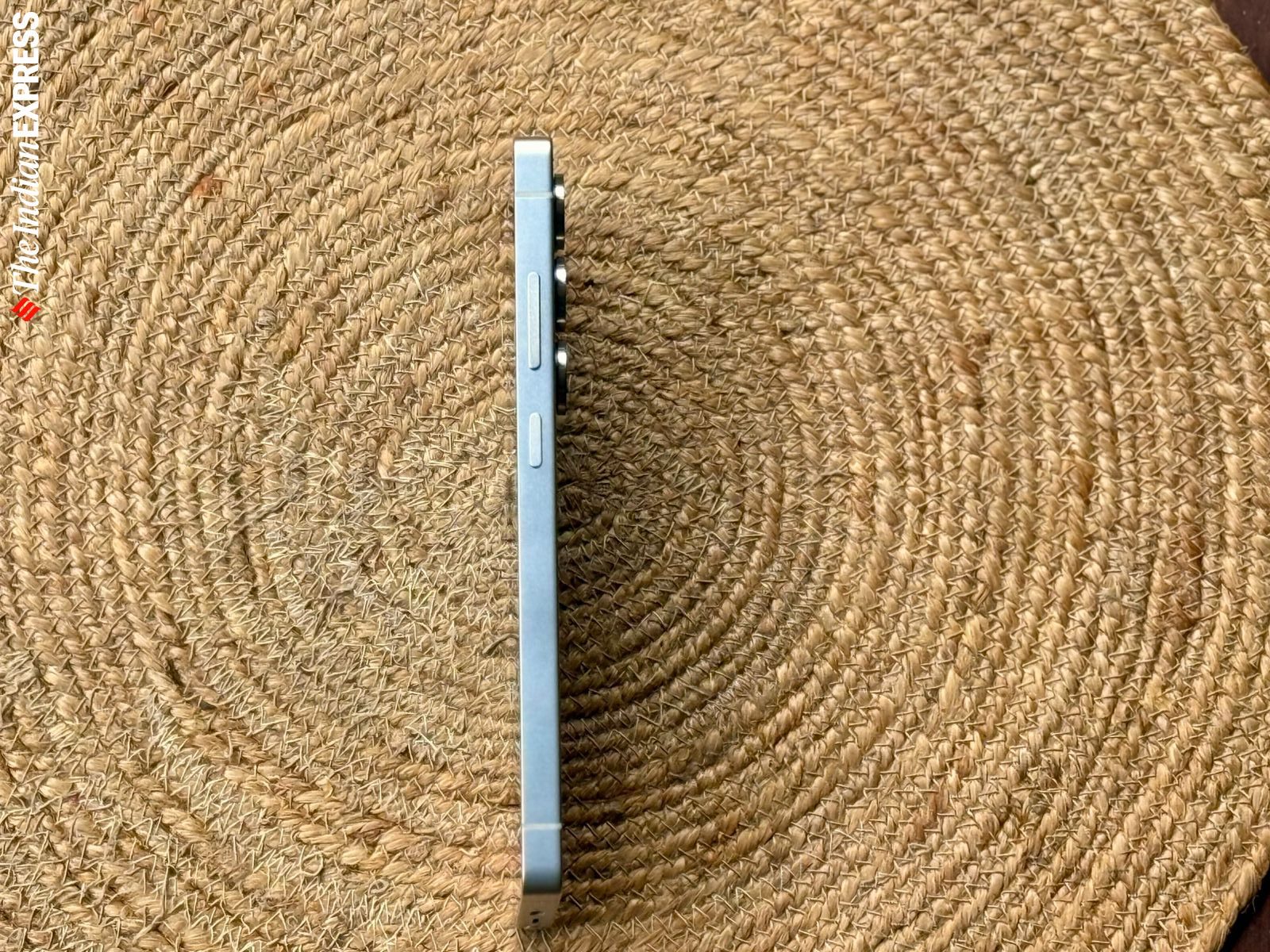 Despite its gigantic size, the S25 Ultra feels incredibly light. (Image credit: Anuj Bhatia/Indian Express)
Despite its gigantic size, the S25 Ultra feels incredibly light. (Image credit: Anuj Bhatia/Indian Express)
Samsung has made the bezel even thinner, which means the screen can be noticeably larger, but the size of the S25 Ultra’s case is only slightly bigger in your hand. It’s a titanium smartphone, and Samsung has shed some weight from the Galaxy S25 Ultra. In daily use, the device does feel lighter, and I’m glad Samsung has figured out a way to shave off a few grams from the phone. However, the Galaxy S25 Ultra is still a thick device, and it’s even more noticeable if you use it without a case.
It’s also a very slippery phone, which is a common trait across all flagships, but I would highly advise getting a case for your S25 Ultra.
Story continues below this ad
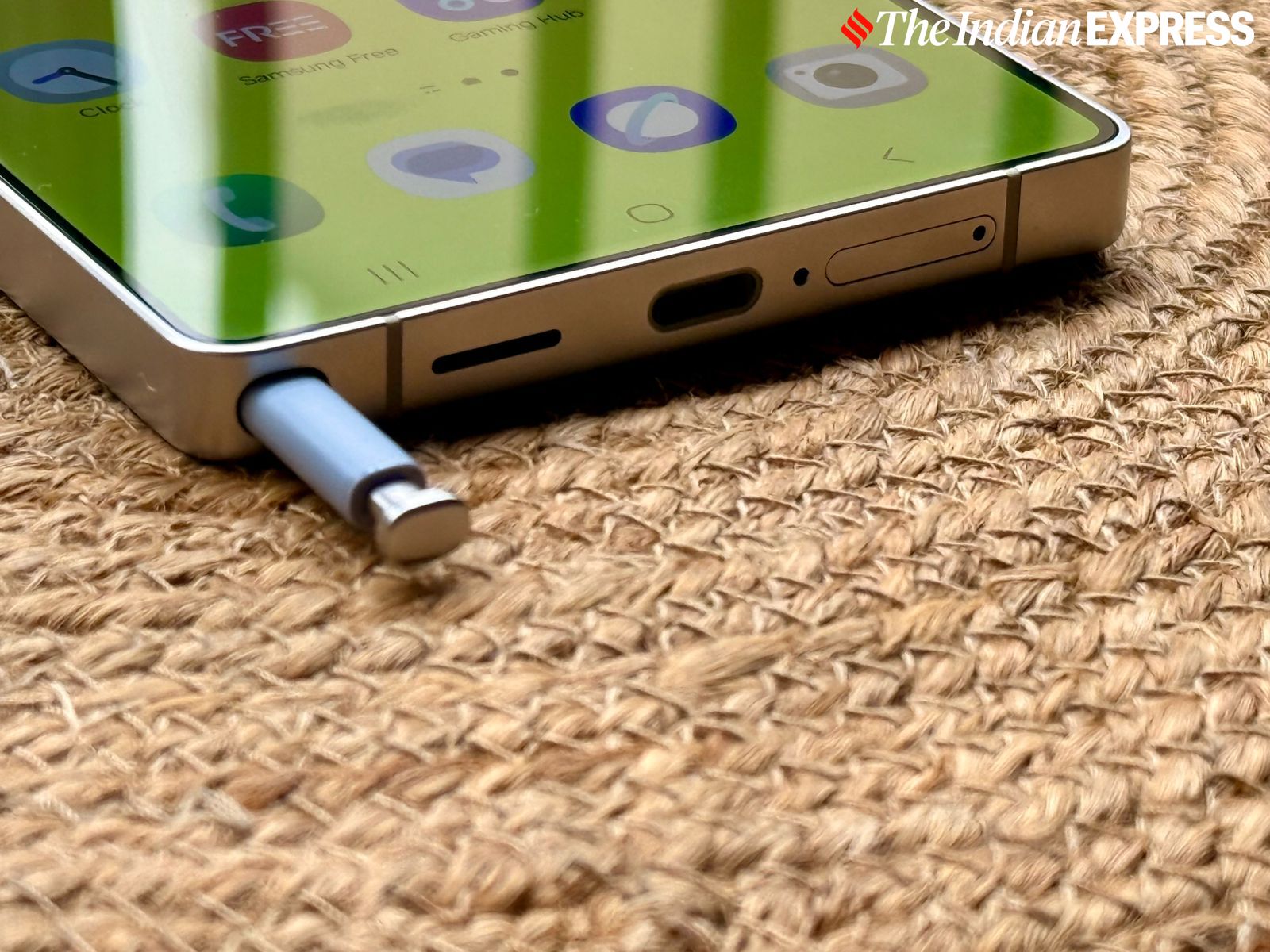 The bottom edge houses the S Pen stylus, a speaker slit, a USB-C (v3.2) port, and a SIM card tray. (Image credit: Anuj Bhatia/Indian Express)
The bottom edge houses the S Pen stylus, a speaker slit, a USB-C (v3.2) port, and a SIM card tray. (Image credit: Anuj Bhatia/Indian Express)
To make the S25 Ultra lighter, Samsung has even slimmed down the S Pen, which made the Galaxy Note iconic and has been a part of the flagship S series smartphones for years. For a change, though, there is no Bluetooth in the stylus, which means no more air actions and a remote shutter.
I know it may disappoint many long-time S Pen fans, but for some reason, Samsung decided to remove Bluetooth functionality from the S25 Ultra’s S Pen, which is a bit puzzling.
Like the iPhone 16 Pro Max, the S25 Ultra is also a two-handed smartphone, and coming from the iPhone 16, it takes some time to adjust to a phone this large. I can’t use it one-handed for most tasks, and a lot of the time, especially when I’m on a morning walk, I feel like I’m about to drop it. It doesn’t fit in my Levi’s (front or back pocket), and I’ve lost the battle. Phones are big now, and I’m living with this fact.
Gorgeous display
 The 6.9-inch screen makes the S25 Ultra a mini tablet for sorts but without the extra footprint. (Image credit: Anuj Bhatia/Indian Express)
The 6.9-inch screen makes the S25 Ultra a mini tablet for sorts but without the extra footprint. (Image credit: Anuj Bhatia/Indian Express)
The Galaxy S25 Ultra has a 6.9-inch HD+ Dynamic AMOLED 2x display, and it’s glorious. My iPhone 13 Mini (review) looks tiny next to the S25 Ultra. The screen is covered in scratch-resistant Gorilla Glass Armor 2.
Story continues below this ad
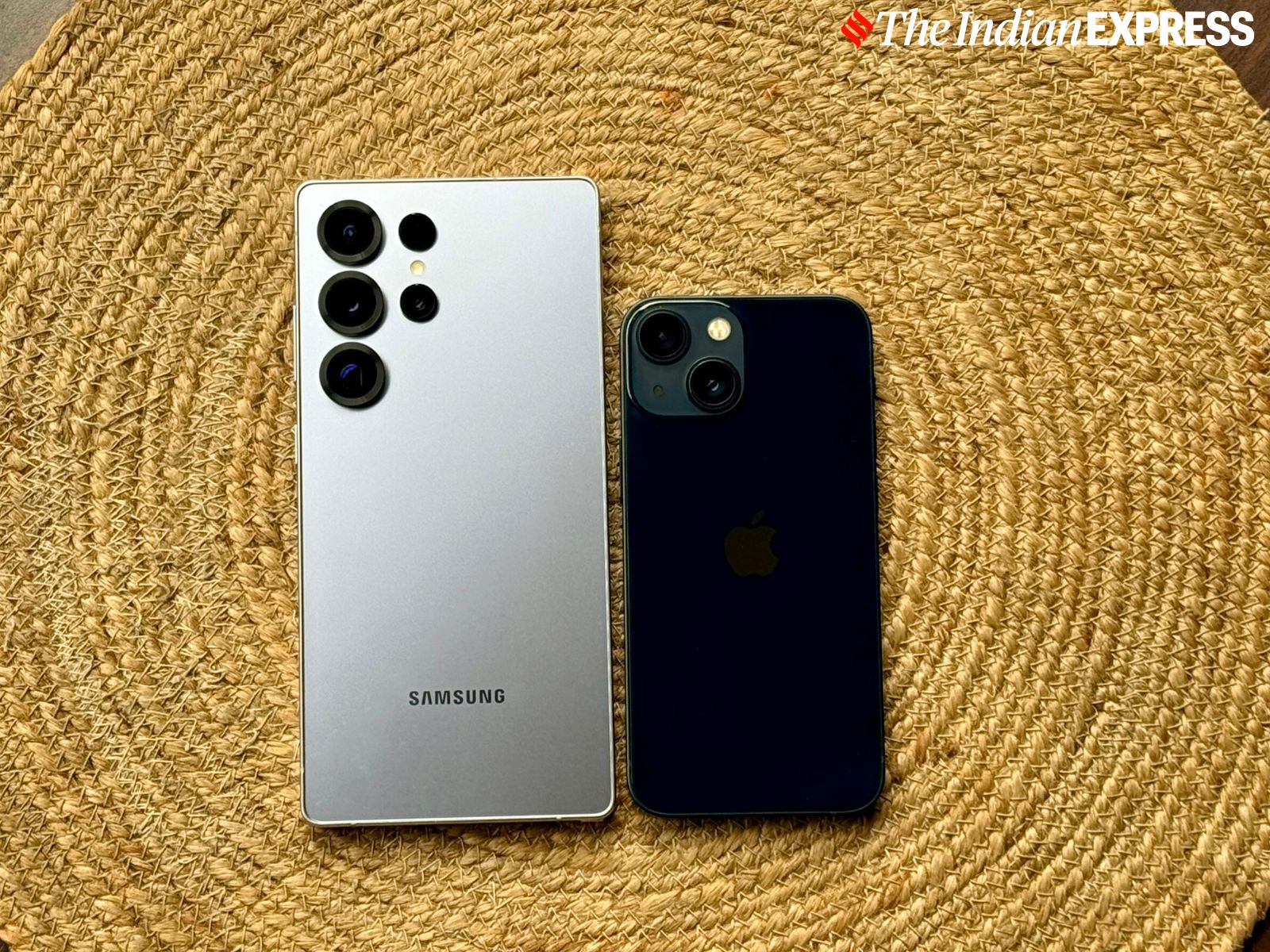 The Galaxy S25 Ultra next to the iPhone 13 mini. This will give you some perspective on the size difference between the two devices. (Image credit: Anuj Bhatia/Indian Express)
The Galaxy S25 Ultra next to the iPhone 13 mini. This will give you some perspective on the size difference between the two devices. (Image credit: Anuj Bhatia/Indian Express)
There are no scratches after a week so far—I carried the phone without a case most of the time and wasn’t particularly careful; it remains unscathed. To state the obvious, the bigger the display, the more you can see. Watching videos, looking at pictures, working on presentations, and opening websites are all much easier to navigate on the 6.9-inch display.
I can easily write an article on Google Docs on the go and edit a story. No matter how much I express my discomfort with a large phone, I get that you see more content, like perhaps an extra row in the mail app allowing you to see one more email or looking at the daily site numbers before you need to scroll more.
Solid cameras, but no major change from previous models
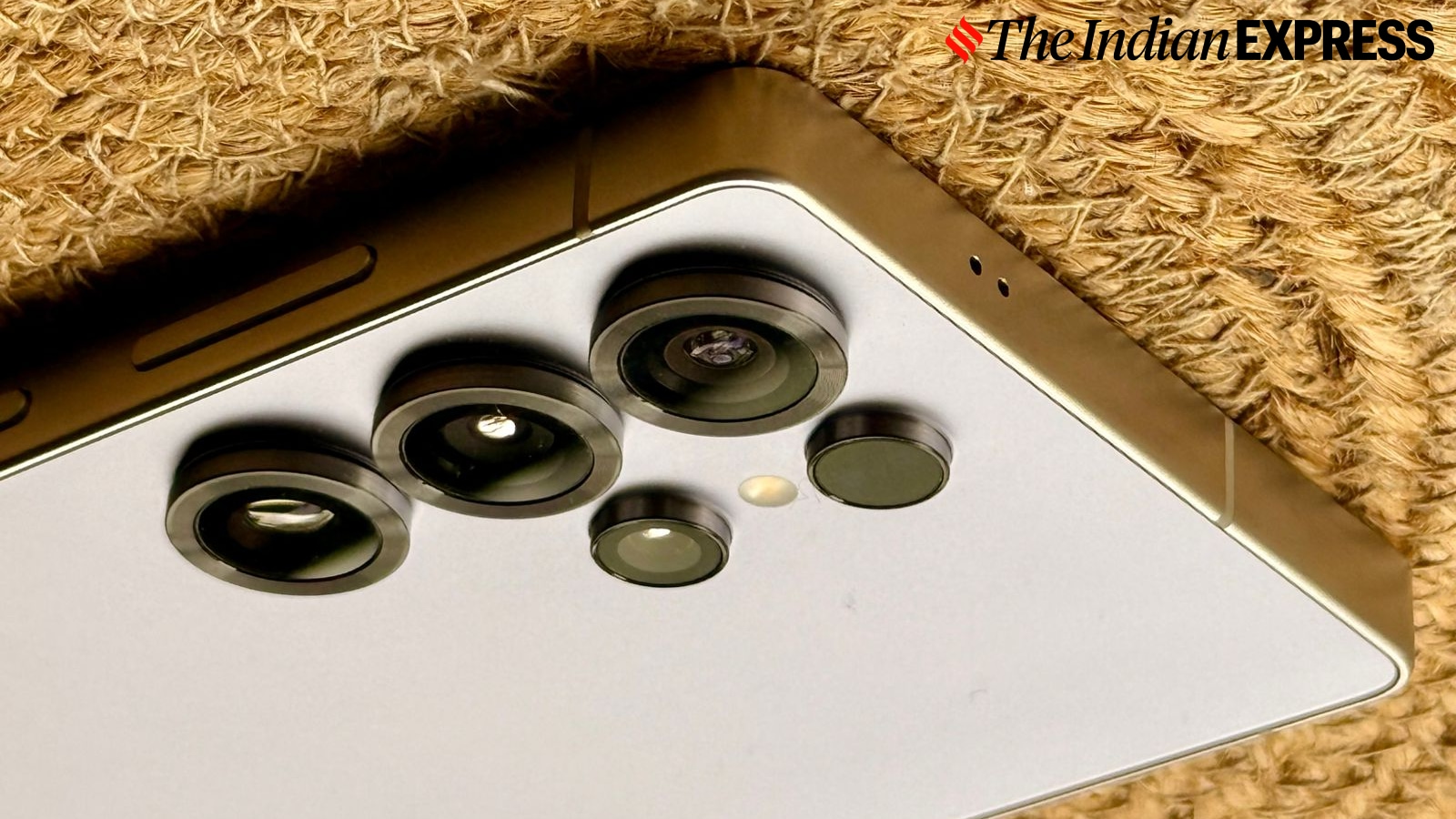 Samsung didn’t change the camera design on the rear, which includes four round lenses and a laser focusing module. (Image credit: Anuj Bhatia/Indian Express)
Samsung didn’t change the camera design on the rear, which includes four round lenses and a laser focusing module. (Image credit: Anuj Bhatia/Indian Express)
Somehow, the cameras on the Galaxy S25 Ultra remain unchanged, except for a new 50-megapixel ultrawide camera, which does make a noticeable difference. There’s still a 200-megapixel main camera, as well as two telephoto lenses that provide 3x and 5x optical zoom.
The selfie camera? It’s also the same 12-megapixel snapper. I liked the Galaxy S24 Ultra’s camera last year; it’s a professional-grade camera that does the job well—in fact, more than I could have wished for. The Galaxy S25 Ultra’s camera seems unchanged, as I mentioned before, but it does perform better in low light, and the algorithms result in better zoom.
Story continues below this ad
The flip side of using a Samsung phone—at least for average consumers—is that the camera delivers punchy reds, yellows, and blues in photos. Not to discredit Samsung, the photos are excellent; they aren’t overly processed, colour reproduction is accurate, and skin tones look great.
 Galaxy S25 Ultra camera sample. (Image credit: Anuj Bhatia/The Indian Express)
Galaxy S25 Ultra camera sample. (Image credit: Anuj Bhatia/The Indian Express)
 Galaxy S25 Ultra camera sample. (Image credit: Anuj Bhatia/The Indian Express)
Galaxy S25 Ultra camera sample. (Image credit: Anuj Bhatia/The Indian Express)
 Galaxy S25 Ultra camera sample. (Image credit: Anuj Bhatia/The Indian Express)
Galaxy S25 Ultra camera sample. (Image credit: Anuj Bhatia/The Indian Express)
 Galaxy S25 Ultra camera sample. (Image credit: Anuj Bhatia/The Indian Express)
Galaxy S25 Ultra camera sample. (Image credit: Anuj Bhatia/The Indian Express)
 Galaxy S25 Ultra camera sample. (Image credit: Anuj Bhatia/The Indian Express)
Galaxy S25 Ultra camera sample. (Image credit: Anuj Bhatia/The Indian Express)
 Galaxy S25 Ultra camera sample. (Image credit: Anuj Bhatia/The Indian Express)
Galaxy S25 Ultra camera sample. (Image credit: Anuj Bhatia/The Indian Express)
 Galaxy S25 Ultra camera sample. (Image credit: Anuj Bhatia/The Indian Express)
Galaxy S25 Ultra camera sample. (Image credit: Anuj Bhatia/The Indian Express)
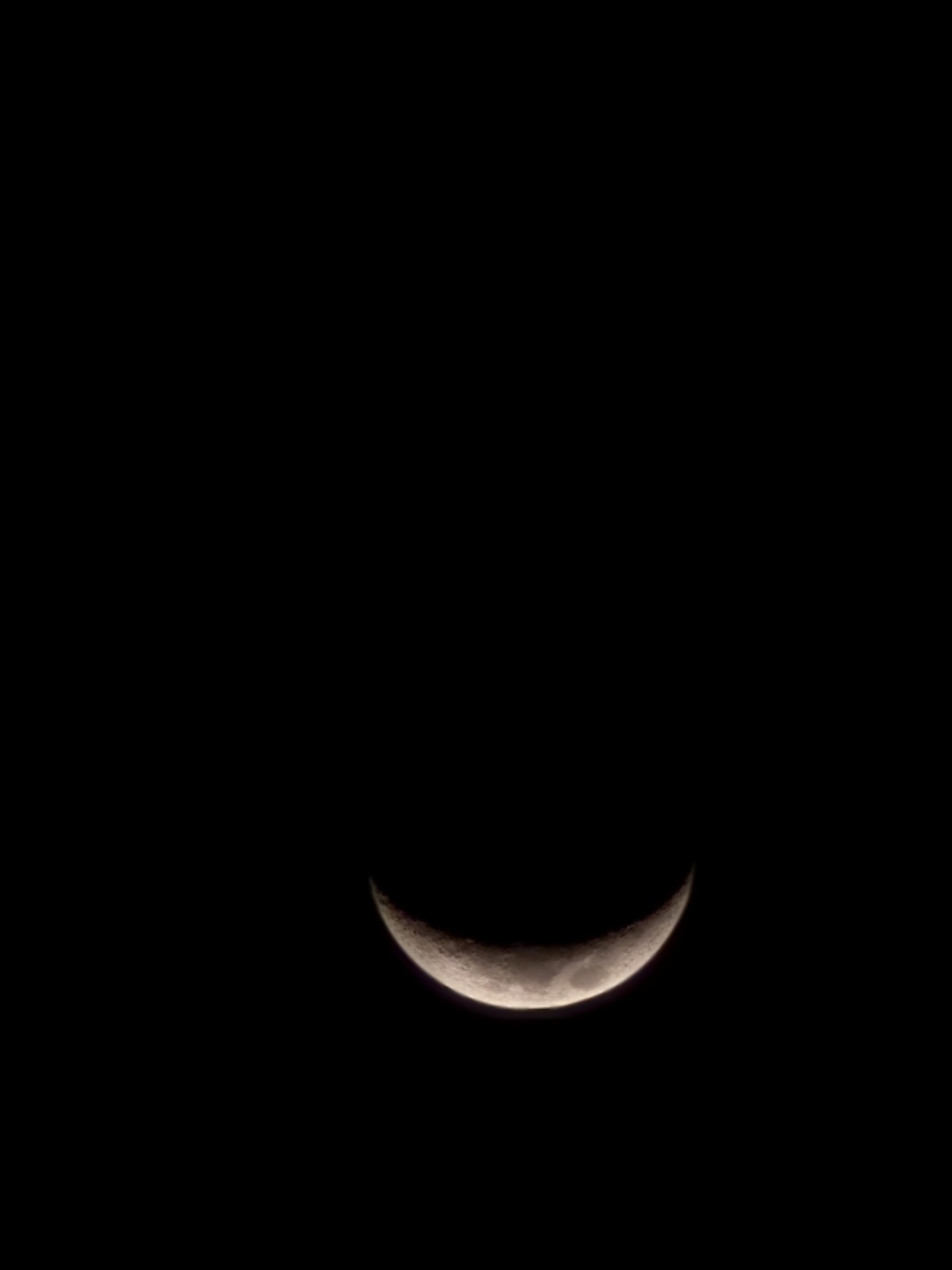 Galaxy S25 Ultra camera sample. (Image credit: Anuj Bhatia/The Indian Express)
Galaxy S25 Ultra camera sample. (Image credit: Anuj Bhatia/The Indian Express)
If you’re someone who prefers natural-looking photos, maybe a Samsung smartphone isn’t for you. That being said, the Galaxy S25 Ultra’s camera is great, and there’s no second thought about it. In fact, I like the optical zoom on the Galaxy S25 Ultra better than the one found on the iPhone 16 Pro Max (review) any day. The results are excellent, and you can see the camera samples for yourself.
AI is here, but this time it’s embedded deep into the OS
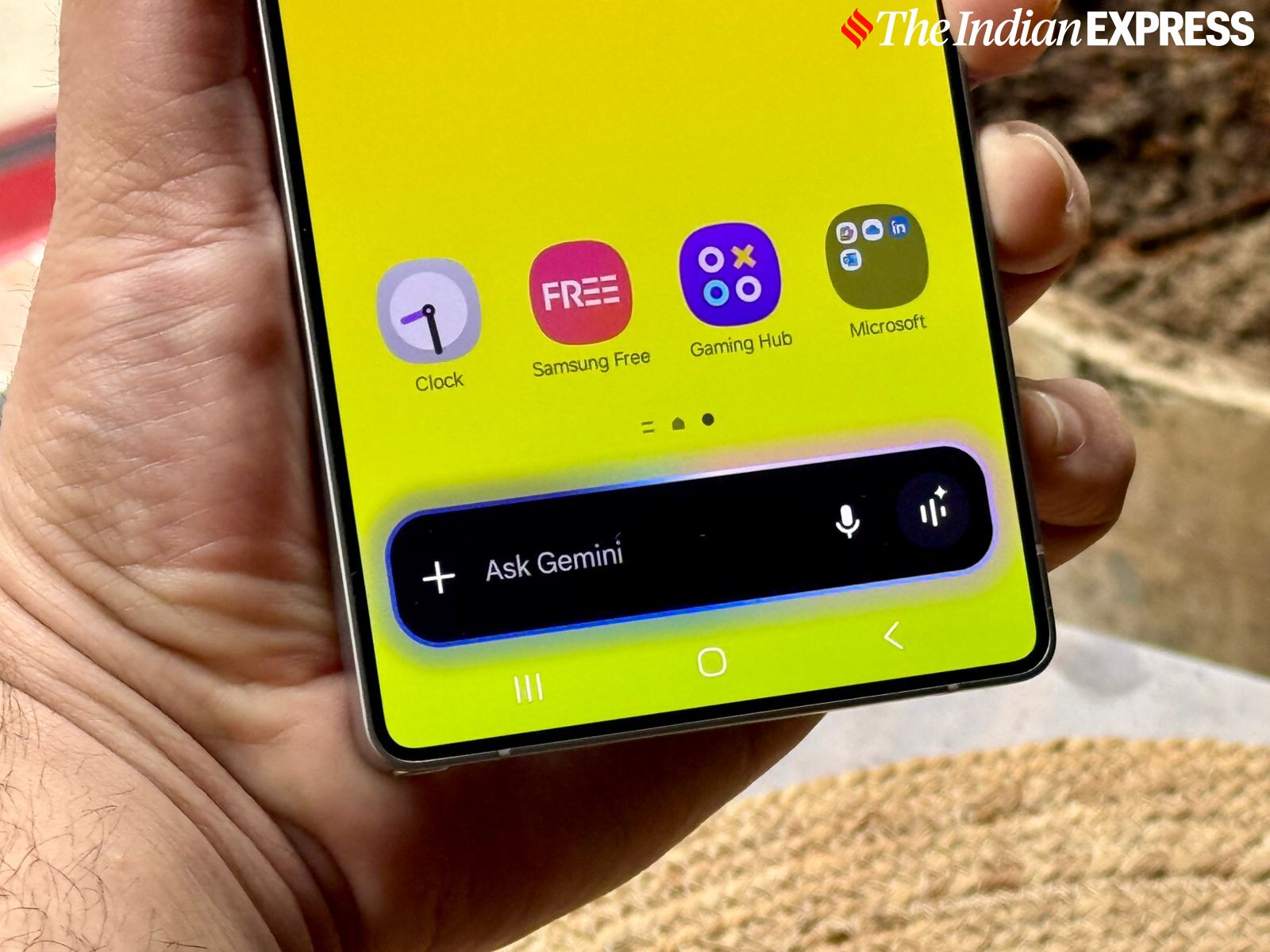 Google’s Gemini has been deeply integrated and is designed to make the device’s responses more human-like. (Image credit: Anuj Bhatia/Indian Express)
Google’s Gemini has been deeply integrated and is designed to make the device’s responses more human-like. (Image credit: Anuj Bhatia/Indian Express)
After using the Galaxy S25 Ultra for several days, I get the sense that the hardware is taking a backseat, and the software is taking center stage in the overall scheme of things. This isn’t to say that the hardware isn’t important—it absolutely is. All I’m trying to say is that while the hardware is still needed to power the necessary smartphone experience, it’s now taking a backseat, and the software is the main focus. This becomes more than obvious on the Galaxy S25 Ultra.
The phone is powered by the latest Snapdragon chip—the 8 Elite (with 12GB of RAM standard on the phone)—which delivers blazing-fast performance, although Samsung claims the S25 Ultra uses a version of the processor that’s specially optimised for Galaxy phones.
Story continues below this ad
 The Galaxy S25 Ultra ships with Android 15, with a completely redesigned One UI 7 atop it. (Image credit: Anuj Bhatia/Indian Express)
The Galaxy S25 Ultra ships with Android 15, with a completely redesigned One UI 7 atop it. (Image credit: Anuj Bhatia/Indian Express)
Even the previous generation’s chip was equally fast. I recently used the OnePlus 13 (review) with the 8 Elite chip, and I couldn’t notice a difference between the two phones in terms of performance. Speaking of the battery, it is 5,000 mAh—the same as the Galaxy S24 Ultra. Yes, it’s superb, and I got my Galaxy S25 Ultra to run for almost 24 hours on a full charge, lasting throughout the day with regular use. However, I was more interested in the Galaxy AI, which Samsung is heavily marketing in the Galaxy S25 series.
But before I jump into the AI stuff, I’d like to briefly mention One UI 7. This was my first time experiencing the new One UI 7 on the S25 Ultra, and it left me with a good impression. Samsung’s version of the skin on top of Android 15 is very clean, fast, and customisable. I felt Samsung has edged out Apple, and One UI 7 actually felt better than iOS. There are small changes that made me fall in love with One UI 7. For example, the notification shade is streamlined, the interface is smoother and easier on the eyes, and the interactions overall are less overwhelming.
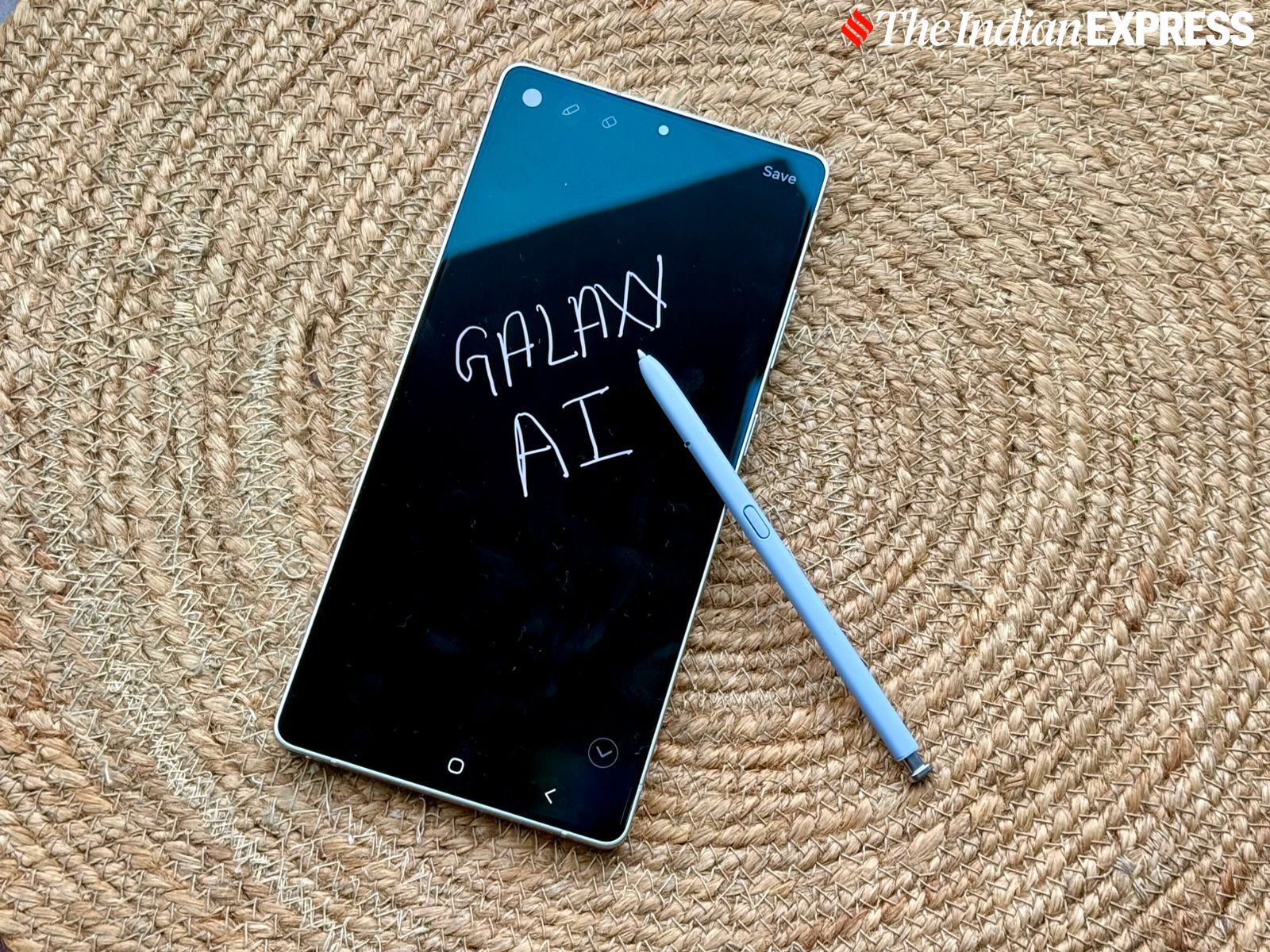 The S Pen still makes the S25 Ultra a unique smartphone, though this time the stylus is less powerful. (Image credit: Anuj Bhatia/Indian Express)
The S Pen still makes the S25 Ultra a unique smartphone, though this time the stylus is less powerful. (Image credit: Anuj Bhatia/Indian Express)
Now, the Galaxy AI. Last year, the Galaxy S24 Ultra (review) marked the beginning of Samsung leaning heavily on artificial intelligence, but I felt the features were hit or miss. This time, Samsung takes the next step with Galaxy AI, and while the company has made some progress, AI still feels like a work in progress.
The Galaxy AI offers photo editing, writing assistance and Circle to Search which many of you are already familiar with, but now Samsung is adding a few more features, notably the Now Bar and the Now Brief. Think of the Now Bar as Apple’s Dynamic Island, but placed at the bottom of the lock screen. It essentially summarises what’s happening on your phone and makes it viewable on the lock screen. For instance, if you’re using Google Maps to find a location, have a timer running, and are playing music, the Now Bar will give you information from all three sources. Notifications are also integrated into the Now Bar. I can still see its potential. For example, if you’re following a cricket match, the Now Bar could give you periodic updates and summaries of key moments. I’m still not used to the Now Bar, but it does feel useful at times.
Story continues below this ad
Meanwhile, Now Brief uses AI to summarise the weather, news, data from Samsung Health, and also suggests playlists and pictures you’ve taken throughout the day. ‘Briefs’ can be delivered at specific times to coincide with the moments when you are most likely to want to see that information, like early morning or late at night before going to bed. However, I found the Now Brief to be more of an experimental feature. Right now, I feel the Brief is a bit limited, but gradually it may improve as more developers support it.
Samsung has also introduced Galaxy AI’s cross-app AI capabilities—simply put, as an AI agent. A long press on the power button brings up Gemini, a new shortcut on all Samsung phones, and you can ask it to help you add information or complete a task in a Samsung app rather than a Google one.
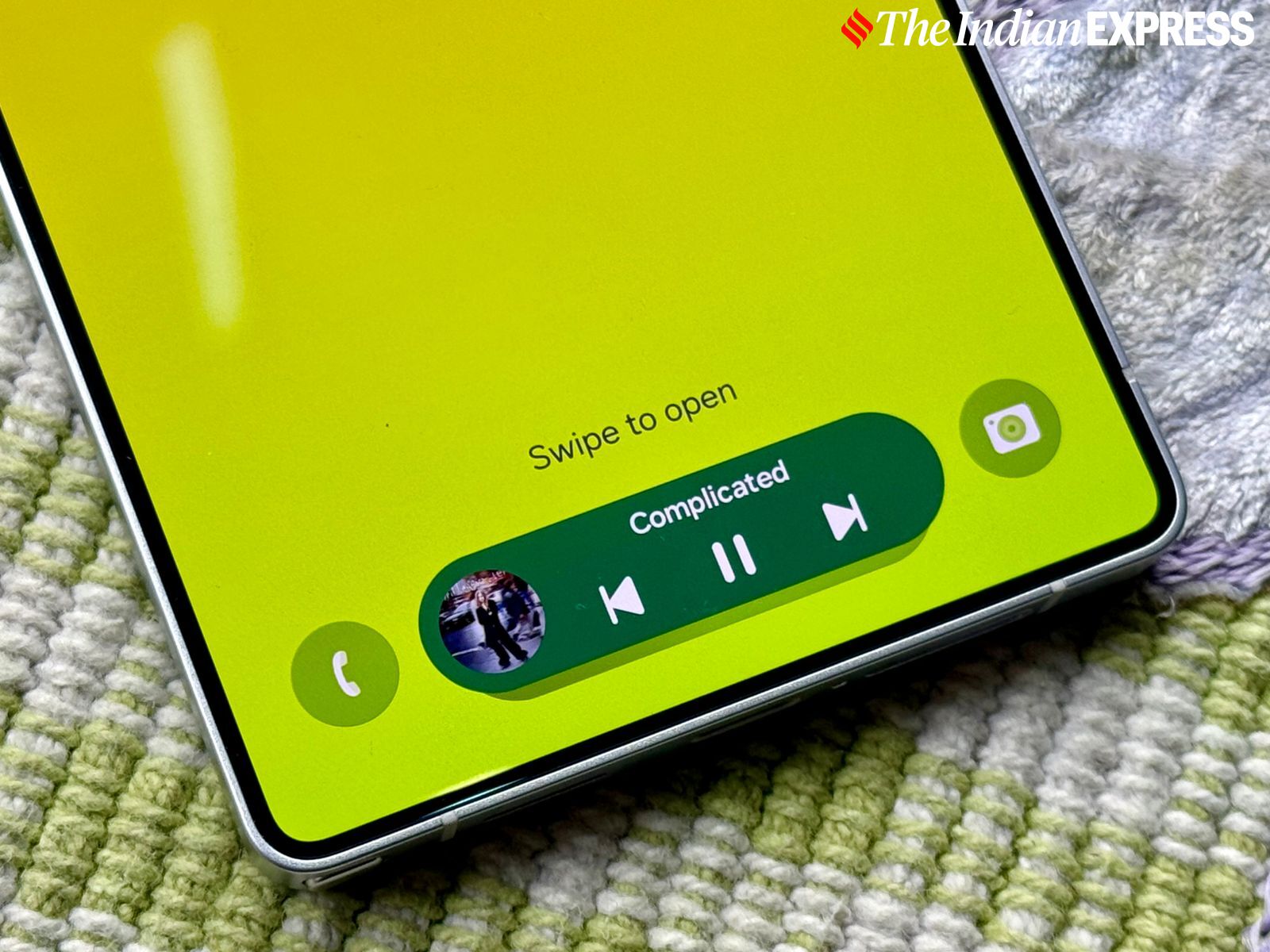 The new Now Bar in action. It’s viewable on the lock screen. (Image credit: Anuj Bhatia/Indian Express)
The new Now Bar in action. It’s viewable on the lock screen. (Image credit: Anuj Bhatia/Indian Express)
The AI, for example, does well in grabbing visual data from a webpage and adding it to the Samsung Calendar. But I noticed that it becomes more complicated, and the AI struggles with my commands in an attempt to become more human-like, making mistakes in understanding user requests. I can see the potential, but for now, it’s not as great as Samsung claims. I’m keeping an eye on how the integration with third-party apps, like WhatsApp, might change the agent-like capability in the future.
There are many more AI features as part of Galaxy AI 2.0, including Drawing Assist and Audio Eraser. As I mentioned before, there is an attempt to make AI more personalised—which is clearly visible. However, I haven’t yet found one feature that instantly makes me jump and become addicted. Maybe the “aha” moment is yet to arrive.
Story continues below this ad
Should you buy the Galaxy S25 Ultra?
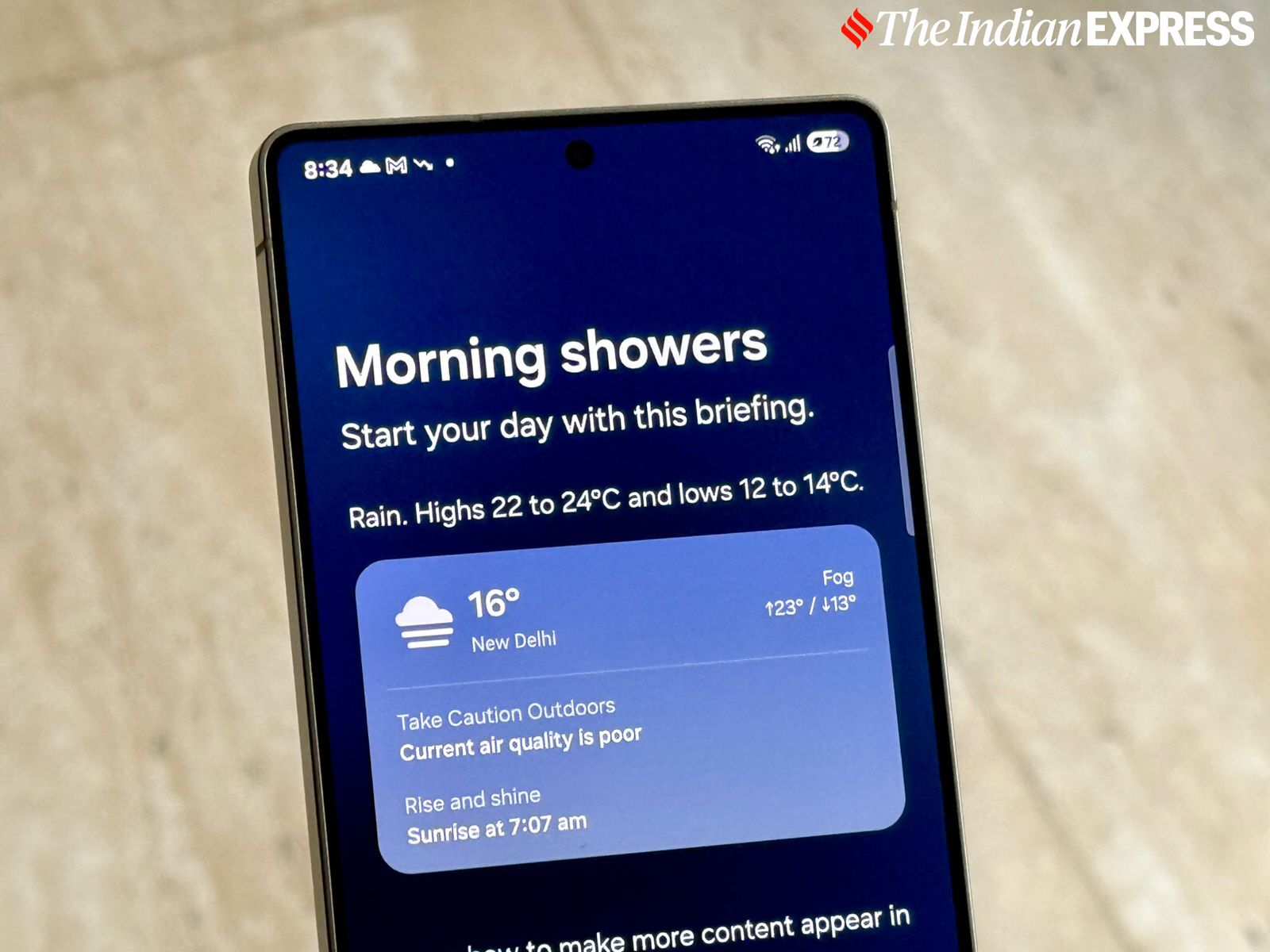 The Now Brief is a bit limited at the moment but it can become addictive. (Image credit: Anuj Bhatia/Indian Express)
The Now Brief is a bit limited at the moment but it can become addictive. (Image credit: Anuj Bhatia/Indian Express)
Some may say the Galaxy S25 Ultra doesn’t look any different from the S24 Ultra. Well, they are not wrong. The S25 Ultra, as I mentioned before, is all about the new AI experiences—and Samsung isn’t hiding that. Honestly, it’s also a good thing. As a reviewer and a consumer myself, there came a point when the conversation was stuck on how the phone looked and the camera. I think the smartphone industry needed a reset moment, and now is the time. The software has been somewhat neglected on modern smartphones, and I’m glad that the Samsung Galaxy S25 Ultra is at least heading in that direction. However, I should mention that AI is still in its early stages, and the experiences are yet to be fully developed. The S25 Ultra is an enthusiast smartphone, and its AI capabilities are just the beginning of what’s to come.




